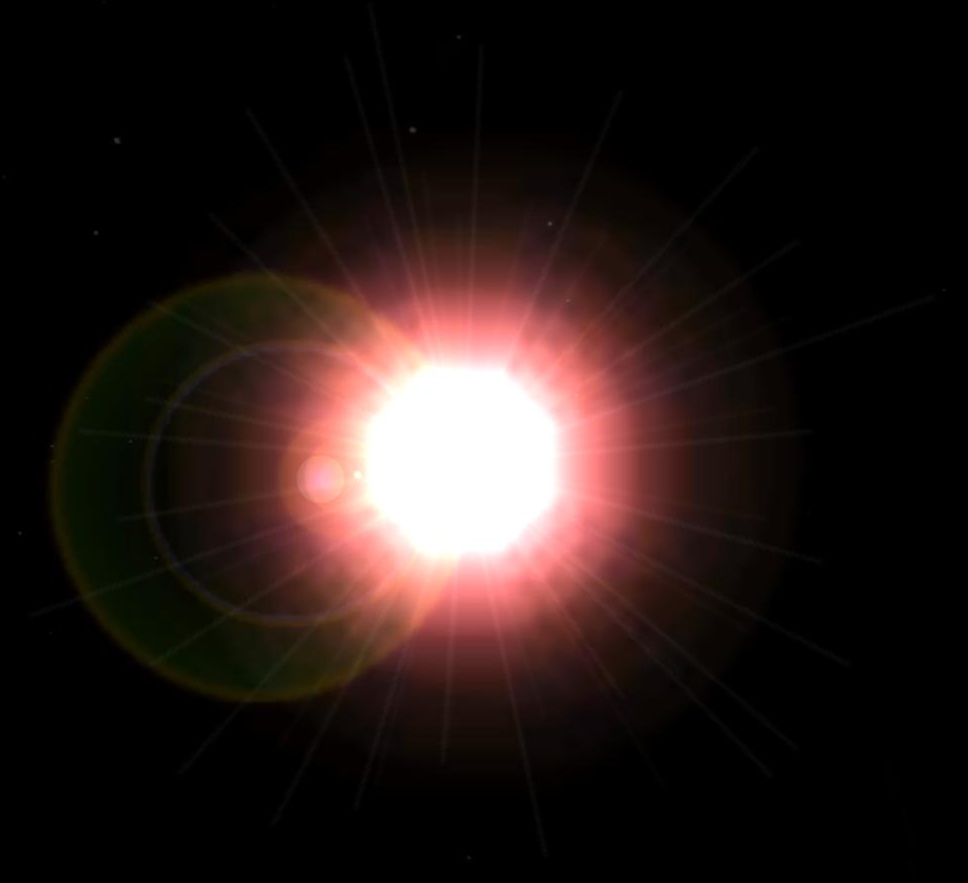Difference between revisions of "Kerbol"
UmbralRaptor (talk | contribs) (started reference frame/warp info) |
UmbralRaptor (talk | contribs) (Warp information mostly filled in.) |
||
| Line 1: | Line 1: | ||
[[Image:Kerbol.jpg|right|The star Kerbol shines brightly through space.]] | [[Image:Kerbol.jpg|right|The star Kerbol shines brightly through space.]] | ||
| − | [[Kerbol]], also known as '''Kerbin Prime''' and '''The Star''' is an [http://en.wikipedia.org/wiki/Stellar_classification#Class_M M class] [http://en.wikipedia.org/wiki/Red_dwarf red dwarf] [[star]] and parent to the planet [[Kerbin]]. | + | [[Kerbol]], also known as '''Kerbin Prime''', '''The Sun''', and '''The Star''' is an [http://en.wikipedia.org/wiki/Stellar_classification#Class_M M class] [http://en.wikipedia.org/wiki/Red_dwarf red dwarf] [[star]] and parent to the planet [[Kerbin]]. |
== Characteristics == | == Characteristics == | ||
| Line 18: | Line 18: | ||
== Reference Frames == | == Reference Frames == | ||
| − | Rotational/Inertial transition: | + | Rotational/Inertial transition: unknown, may not exist. |
{| | {| | ||
!Warp | !Warp | ||
| Line 30: | Line 30: | ||
|- | |- | ||
|5x | |5x | ||
| − | | ? m | + | | ? m (Cannot be used close in due to the [[Deep Space Kraken]]) |
|- | |- | ||
|10x | |10x | ||
| − | | | + | | 6,540,000 m |
|- | |- | ||
|50x | |50x | ||
| − | | | + | | 16,350,000 m |
|- | |- | ||
|100x | |100x | ||
| − | | | + | | 32,700,000 m |
| − | |||
| − | |||
| − | |||
|- | |- | ||
|1000x | |1000x | ||
| − | | | + | | 65,400,000 m |
|- | |- | ||
|10000x | |10000x | ||
| − | | | + | | 130,800,000 m |
|} | |} | ||
Revision as of 03:58, 19 May 2012
Kerbol, also known as Kerbin Prime, The Sun, and The Star is an M class red dwarf star and parent to the planet Kerbin.
Characteristics
- Equatorial Radius: 65,400 km
- Mass: 1.75e28 kg = 0.00880 solar masses
- Surface Gravity: 273.06 m/s^2 or 27.84G
- Gravitational parameter: 1.167922e9 km^3/s^2
- Escape velocity from surface: 188.9 km/s
- Escape velocity Kerbin's orbit: 13.13 km/s
Reference Frames
Rotational/Inertial transition: unknown, may not exist.
| Warp | Minimum Altitude |
|---|---|
| 1x | n/a |
| 2x | 0 m |
| 5x | ? m (Cannot be used close in due to the Deep Space Kraken) |
| 10x | 6,540,000 m |
| 50x | 16,350,000 m |
| 100x | 32,700,000 m |
| 1000x | 65,400,000 m |
| 10000x | 130,800,000 m |
Planets
As of version 0.15 there is only a single orbiting planet, Kerbin. Additional planets are planned for future versions.
Also
Between 0.7 and 0.10.1, Kerbol was a mere point of light in the skybox. It became an possible to reach in 0.11, and gained gravity in 0.12. Since 0.14, close encounters will result in a collision that destroys the ship and kills all crew members. It is still safe to drop below the "surface" in 0.13.3, but a ship can break up from the extreme gravity gradients and/or shot outwards at large fractions of c.
While Kerbol can be reached from Kerbin's orbit by using a Hohmann transfer orbit, a spacecraft doing so will require a delta-V of about 8 km/s to do so. The most efficient way to reach Kerbol from Kerbin's orbit is to use a Bi-Elliptic transfer. With a sufficiently-distant apoapsis, the required delta-V to sundive can be reduced to under 4km/s, at the expense of drastically-increased flight time.
